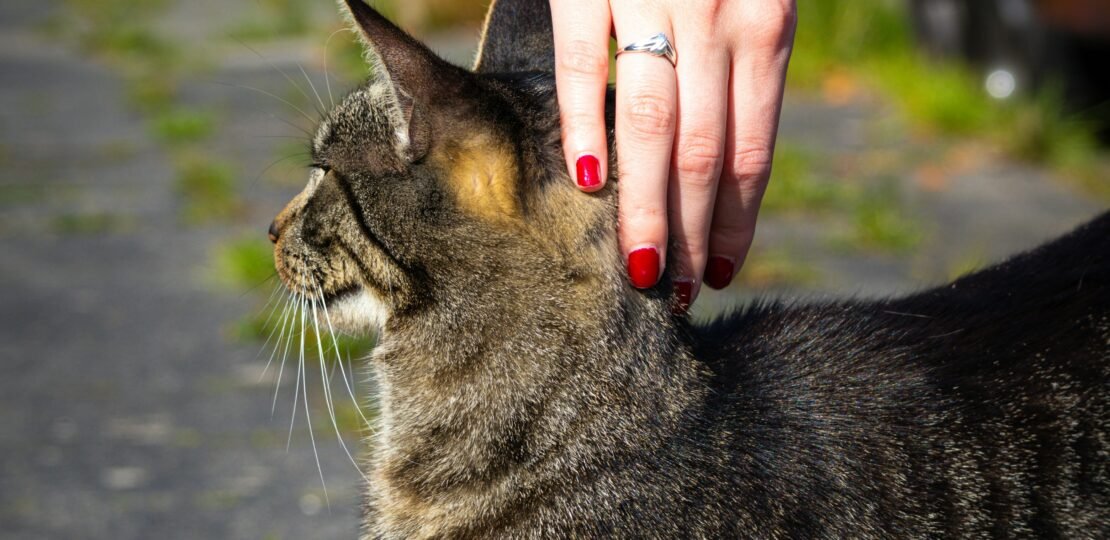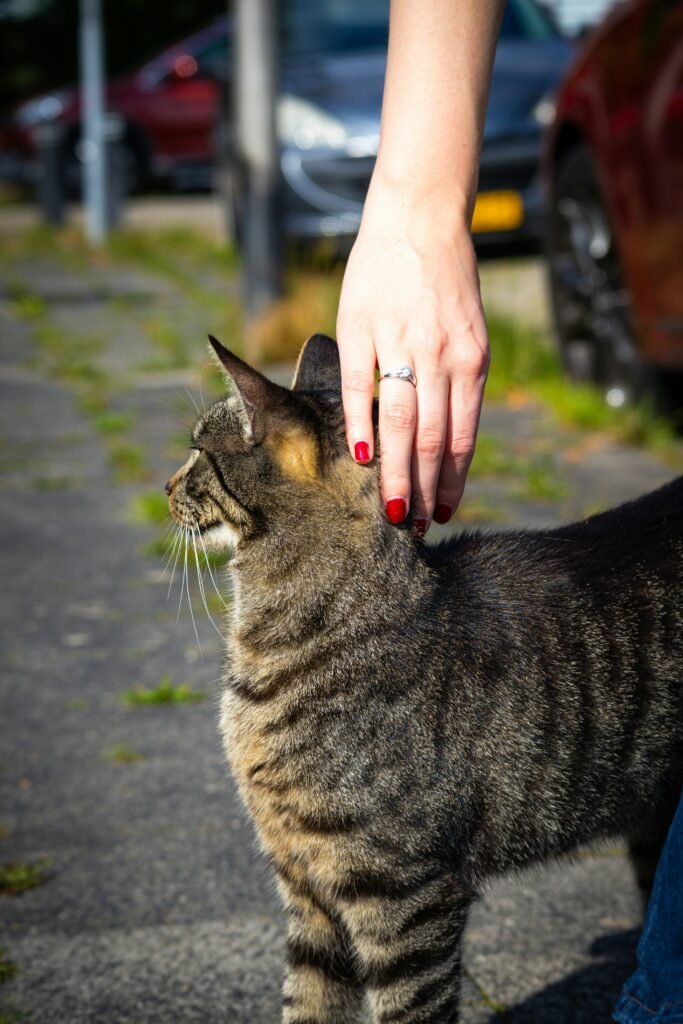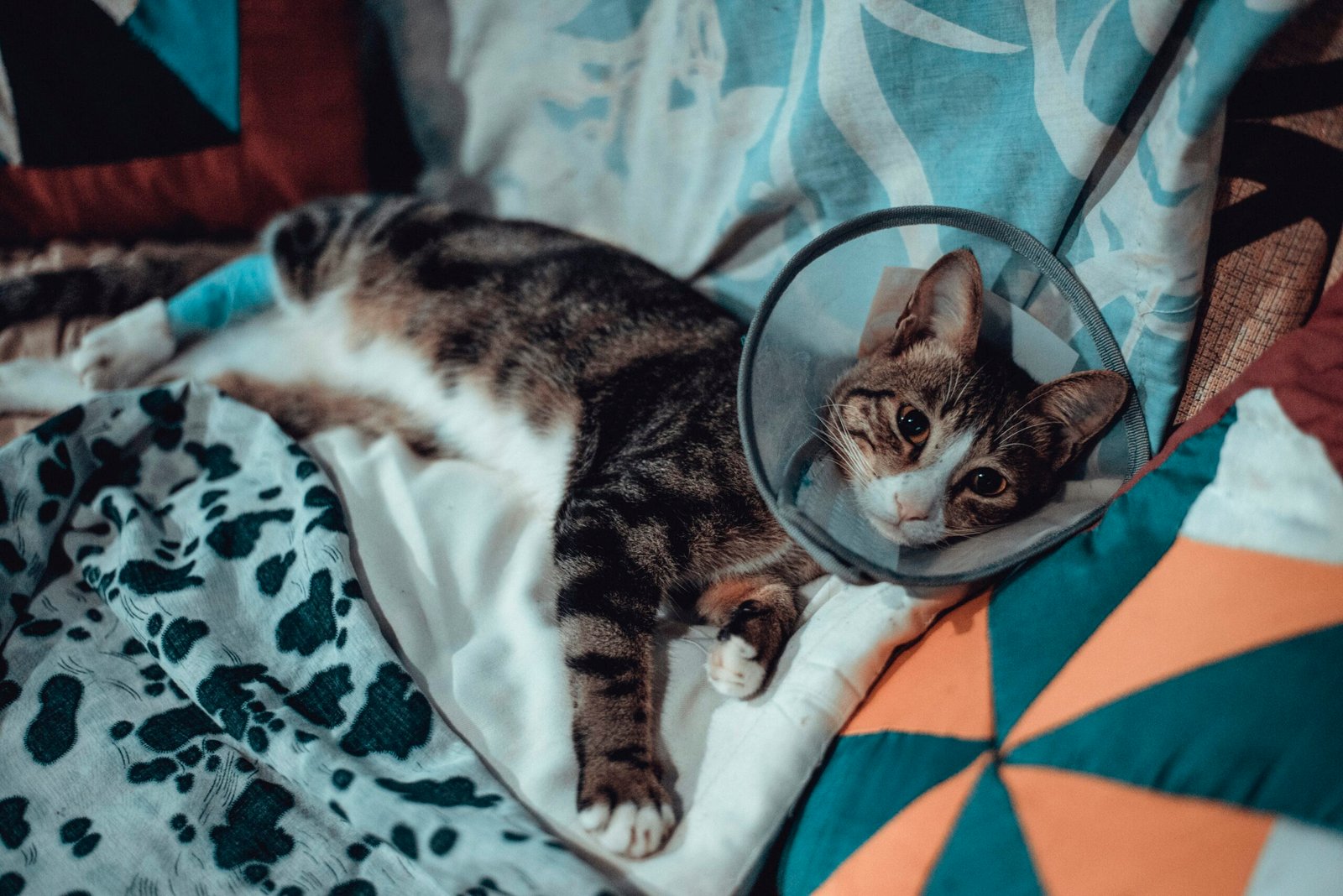How to Tell If Your Cat Is Sick: Early Warning Signs You Shouldn’t Ignore
يونيو 20, 2025 | by Admin


Introduction
Being a cat owner comes with joyful moments, yet it also entails a significant responsibility. One of the most critical aspects of this responsibility is being attentive to your feline friend’s health. Cats, by their nature, are creatures that often conceal their discomfort, making it challenging for owners to discern when something is amiss. This behavior stems from their instinctual traits, as in the wild, showing signs of weakness can make them vulnerable to predators. Therefore, recognizing early warning signs of illness is essential in ensuring that your cat receives the care it needs promptly.
Being vigilant about your cat’s health can significantly impact its quality of life. As cat owners, we should familiarize ourselves with various health indicators, especially since our cats may not express their pain or discomfort verbally. This vigilance will enable us to identify potential health issues before they escalate, which can save our pets from unnecessary suffering and reduce the financial burden of emergency veterinary visits.
Throughout this article, we will delve into the common types of signs that indicate your kitty may be unwell. We will explore behavioral changes that can signal distress or discomfort, such as altered eating habits or increased aggression. Additionally, we will discuss physical symptoms to watch for, including changes in grooming habits and other notable shifts in your cat’s overall appearance or weight. By staying informed about these indicators, cat owners can better advocate for their pets’ health and welfare, ensuring they continue to thrive.
Understanding Behavioral Changes
Behavioral changes in cats can be one of the first indicators of an underlying illness. It is crucial for cat owners to recognize these signs early enough to seek veterinary attention if necessary. One of the most common changes is withdrawal from social interactions. A typically social and affectionate cat may suddenly become reclusive, hiding in dark corners of the house or avoiding contact with family members. This change can signal discomfort or pain, prompting a re-evaluation of their health status.
Another significant indicator is decreased appetite. While it is normal for cats to occasionally skip a meal, a consistent lack of interest in food can be alarming. An example can be illustrated by a usually eager eater who suddenly turns away from their favorite food. This behavior may be indicative of dental issues, gastrointestinal problems, or other medical concerns. Monitoring food intake and weight is essential for prompt identification of potential issues.
Grooming habits also provide insight into a cat’s well-being. Cats are renowned for their grooming behaviors, and any deviation from this routine can be concerning. If a cat begins to neglect their grooming, resulting in an unkempt coat or visible matting, it may suggest physical discomfort, mental distress, or even a skin condition. Conversely, if a cat over-grooms, causing bald patches or skin irritation, it could be a sign of anxiety or another health problem that requires attention.
Lastly, altered behavior may manifest as unusual aggression or lethargy. A cat that becomes aggressive without provocation may be in pain or discomfort, requiring immediate assessment. Additionally, lethargy—where a cat shows no interest in play, grooming, or other normal activities—often indicates illness. For instance, a normally playful kitten that suddenly prefers to sleep for extended periods may be signaling an underlying health issue. Understanding these behavioral changes is essential for effective early detection of illness, enabling timely intervention and care.
Physical Symptoms to Watch For
Monitoring the physical health of your cat is vital to ensuring their well-being. Several symptoms can serve as early indicators of illness that should not be overlooked. One of the most common signs is vomiting, which can occur due to various reasons such as dietary indiscretion, hairballs, or underlying health conditions. If a cat vomits frequently or shows lethargy alongside vomiting, it is advised to consult a veterinarian promptly.
Another important symptom to be aware of is diarrhea, which can lead to dehydration if not addressed. Changes in a cat’s stool consistency could signal issues ranging from dietary changes to more severe gastrointestinal disorders. A thorough evaluation by a veterinary professional should be considered if diarrhea persists for more than a day, especially if it is accompanied by additional symptoms like lethargy or decreased appetite.
Weight changes, whether gain or loss, are crucial indicators of your cat’s health. Sudden weight loss can be a sign of metabolic disorders, infections, or even cancer, whereas unexplained weight gain may indicate conditions like diabetes or hypothyroidism. Keeping track of your cat’s weight and recognizing any significant fluctuations can be essential for early detection of health issues.
Breathing difficulties should also not be disregarded. Symptoms such as labored breathing, wheezing, or excessive panting can point to respiratory infections, asthma, or heart disease. If you notice any respiratory distress, seek veterinary assistance immediately, as this could be a life-threatening condition.
Lastly, altered litter box habits can signify various health problems, including urinary tract infections or more severe underlying issues. Changes in frequency, straining during urination, or elimination outside the litter box warrant a visit to the veterinarian. By being vigilant and recognizing these physical symptoms, you can play an essential role in your cat’s health and early diagnosis of potential illnesses.
The Importance of Monitoring Food and Water Intake
Monitoring your cat’s food and water intake is a fundamental aspect of pet health care. Changes in consumption can signal underlying health issues that require immediate attention. A noticeable decrease in appetite, otherwise known as food aversion, can indicate various medical conditions, ranging from dental problems to serious systemic issues. On the other hand, an increased appetite might suggest conditions like diabetes or hyperthyroidism.
Dehydration is another critical factor to consider when assessing your cat’s well-being. Cats that do not drink sufficient water may become dehydrated, which can lead to severe complications. Signs of dehydration include lethargy, dry mouth, and a loss of skin elasticity. Observing your cat’s water bowl is essential; any sudden decrease in their water intake should raise concern. It is also beneficial to ensure that your pet’s water is clean and fresh, as cats can be particular about their drinking preferences.
Additionally, sudden weight loss can be an alarming sign of a health issue. Regularly weighing your cat can help you keep track of any significant changes in their body weight. A decline in body weight, when combined with other symptoms such as lethargy or unusual grooming behaviors, can indicate a more serious condition, such as gastrointestinal disorders or cancer.
To effectively monitor these changes, it is advisable to keep a daily log of your cat’s eating and drinking habits. Note the amount of food consumed and any changes in their drinking habits. Pay attention to their behavior as well; for instance, if they are not finishing their meals or seem disinterested in their food. By being vigilant and proactive, you can detect early signs of health problems and act promptly to seek veterinary assistance when necessary.
Recognizing Changes in Grooming Habits
Grooming is an essential behavior for cats, serving not only to maintain their coat’s cleanliness but also to regulate body temperature and establish a sense of comfort. Consequently, any noticeable changes in a cat’s grooming habits can signal potential health issues. Alterations can be broadly classified into two categories: over-grooming and under-grooming, both of which warrant careful observation.
When a cat engages in over-grooming, it often leads to areas of baldness or irritated skin. This excessive grooming can be attributed to several factors, including stress, anxiety, or underlying health problems such as allergies or skin diseases. For example, a normally laid-back cat may suddenly begin to obsessively lick its paws or belly after the introduction of a new pet or a change in household routine. This behavior may signify that the cat is experiencing emotional distress, which could potentially escalate if left unaddressed.
Conversely, under-grooming can also indicate various health issues. A cat that previously groomed itself regularly may begin to neglect this vital self-care task. This change could arise from physical ailments such as arthritis, dental disease, or obesity, which may hinder the cat’s ability to groom comfortably. Additionally, older cats may lose interest in grooming altogether, implying cognitive decline or chronic pain. A real-life scenario might involve an elderly cat that stops grooming its coat, leading to matting and a dull appearance. Such a situation could point to an underlying health concern that necessitates veterinary attention.
Overall, recognizing changes in grooming habits is crucial for any cat owner. Early detection of these alterations not only encourages proactive care but can also lead to timely interventions, enhancing your feline friend’s quality of life. Making a note of these behavioral shifts and discussing them with a veterinarian can significantly impact your cat’s well-being in the long run.
The Role of Age and Breed in Health Monitoring
Understanding the impact of age and breed on a cat’s health is crucial for proactive pet ownership. As cats age, their bodies undergo various physiological changes, making them more susceptible to specific health problems. Senior cats, typically classified as those over seven years of age, are more prone to conditions such as arthritis, kidney disease, hyperthyroidism, and dental issues. These health concerns can present subtle signs, including changes in grooming habits, altered activity levels, or altered feeding preferences. It is vital for cat owners to monitor these changes closely, as early detection can significantly improve treatment outcomes.
Moreover, breed-specific tendencies can further influence a cat’s health. Certain breeds have a predisposition to genetic disorders or specific health conditions. For example, Persians are often more susceptible to respiratory issues due to their flat facial structure, while Siamese cats may exhibit a higher prevalence of certain types of cancers. Similarly, Maine Coons are known for hypertrophic cardiomyopathy, a condition affecting the heart. Recognizing these genetic predispositions allows pet owners to be vigilant regarding signs of illness associated with their cat’s breed.
It is important for cat owners to tailor their health monitoring approaches based on both age and breed. Regular vet check-ups become even more essential as cats age, ensuring prompt identification of any developing health issues. Additionally, breed characteristics should be factored into health assessments; for instance, being more attuned to the symptoms pertinent to certain breeds can be life-saving. Knowledge of these factors not only enhances a cat’s quality of life but also fosters a proactive approach to veterinary care, ensuring pet owners remain vigilant and informed regarding their cats’ health.
When to Contact the Veterinarian
Recognizing when to contact a veterinarian is crucial for maintaining your cat’s health. Many cat owners may be unsure about what symptoms warrant immediate veterinary attention. It is essential to remember that when it comes to your pet’s well-being, erring on the side of caution is always advisable. Certain signs indicate that your feline friend may be experiencing significant health issues, necessitating prompt intervention.
Signs that should prompt a visit to the veterinarian include:
- Difficulty breathing or wheezing, which may indicate respiratory distress.
- Severe lethargy or sudden changes in energy levels, suggesting underlying conditions such as infections or other serious ailments.
- Persistent vomiting or diarrhea, especially if accompanied by blood, could signify gastrointestinal problems that require medical assessment.
- Loss of appetite for more than 24 hours, as it may hint at dental issues or other health concerns.
- Signs of pain, such as excessive hiding, vocalization, or sensitivity to touch.
- Unexplained weight loss, which can indicate metabolic disorders or chronic diseases.
- Difficulty in urinating or defecating, potentially signaling urinary blockages or constipation.
These red flags should always prompt immediate action. Delaying a veterinary visit in response to these symptoms could result in worsening conditions for your cat. Cat owners should familiarize themselves with their pet’s normal behavior and appearance to better recognize when something is amiss. Promptly addressing health concerns can lead to more effective treatment and better outcomes for your beloved pet. Remember, your veterinarian is your best resource for guidance regarding your cat’s health, so do not hesitate to reach out when you observe concerning symptoms.
Preventative Measures and Regular Check-Ups
Maintaining the health of your cat involves a combination of preventative care, regular veterinary visits, and at-home assessments. By adopting a proactive approach, cat owners can significantly reduce the risk of illness and ensure their feline companions lead long, healthy lives. An essential aspect of preventative care is scheduling routine veterinary check-ups. These visits allow veterinarians to detect early signs of illness that might otherwise go unnoticed. It is advisable to take your cat for a veterinary examination at least once a year, or more frequently if they are senior or have underlying health conditions.
Proper nutrition also plays a critical role in maintaining your cat’s overall health. Cats require a balanced diet that meets their specific needs based on their age, activity level, and any medical issues. Consulting with a veterinarian about the best dietary options for your cat can help prevent a range of health issues. Additionally, maintaining a consistent vaccination schedule is vital. Vaccinations protect against various infectious diseases, ensuring your cat’s immune system is fortified. Timely vaccinations can safeguard your feline from serious illnesses, as well as reduce the risk of transmission to other pets.
Moreover, performing regular at-home assessments can serve as an early detection mechanism for potential health problems. Owners should gradually familiarize themselves with their cat’s normal behavior, appetite, and appearance. Any deviations from the norm, such as changes in weight, coat quality, or litter box habits, can be warning signs that warrant prompt veterinary attention. By integrating these preventative measures and regularly monitoring your cat’s condition, you will be better equipped to identify any signs of sickness early on, thus enhancing their quality of life.
Conclusion
Monitoring the health of your cat is a crucial aspect of responsible pet ownership. Throughout this article, we have explored several early warning signs indicating that your feline companion may be unwell. By being vigilant and observing both behavioral and physical changes in your cat, you can catch potential health issues before they become serious. Some of the signs to be aware of include alterations in appetite, changes in grooming habits, and any unusual lethargy, as well as other physical indicators such as vomiting or diarrhea.
It is essential for cat owners to trust their instincts when it comes to their pet’s health. If you notice any concerning symptoms, seeking veterinary advice promptly can make a significant difference in your cat’s well-being. Timely intervention is often critical in managing health conditions effectively. Remember, a small change today could be a signal of a more significant issue tomorrow. Therefore, maintaining an observant eye ensures that your beloved pet receives the care it needs as soon as possible.
The bond between cats and their owners is uniquely special, marked by mutual affection and companionship. Every pet owner has a responsibility to provide a safe and healthy environment for their animals. By being attentive and nurturing, cat owners can significantly improve their pets’ quality of life. In summary, being proactive about your cat’s health fosters a deeper connection, ultimately ensuring that your feline friend remains a happy and vital part of your family for many years to come.
RELATED POSTS
View all

